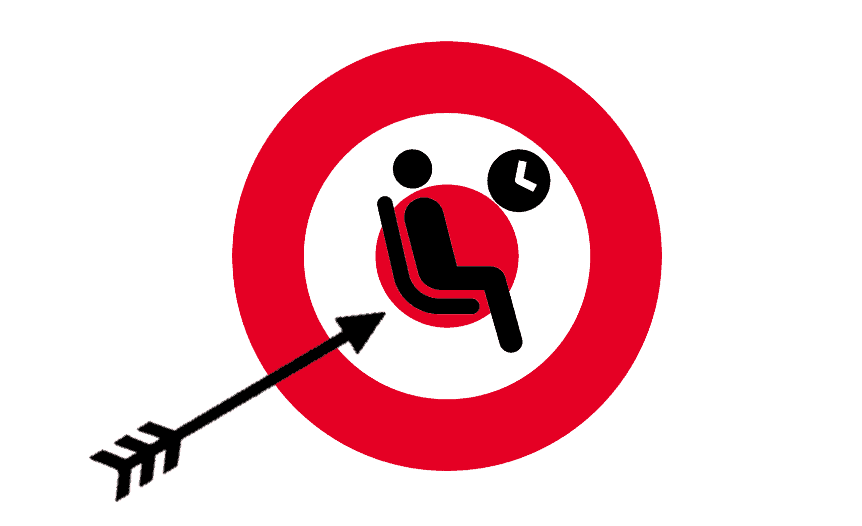
Sedentary behaviour interventions in real-world conditions: what are the health benefits?
April 20, 2020
Sedentary Behaviour and Diabetes Information as a Source of Motivation to Reduce Daily Sitting Time in Office Workers: A Pilot Randomised Controlled Trial
May 7, 2020Today’s post comes from Dr. Stephanie Prince Ware, a Research Scientist with the Centre for Surveillance and Applied Research at the Public Health Agency of Canada, describing her study recently published in the International Journal of Behavioral Nutrition and Physical Activity. The full study is available here. More on Stephanie can be found at the bottom of this post.
Background
In the past 10 years, sedentary behaviour research has grown rapidly (1). Comparing and reproducing this research and interpreting the link between sedentary behaviour and health can be challenging when the method of measurement of this core/primary behaviour differs across studies. For example, some studies may use self-report tools (e.g., questionnaires, diaries/logs, ecological momentary assessments [EMAs]) to measure sedentary behaviour while others use devices (e.g., inclinometers, accelerometers, heart rate monitors). It is, therefore, important that we understand how comparable, valid and reliable our measures of sedentary behaviour are. In other words, how confident can we be that the measure we’re using is capturing true behaviour and will it capture the same quantity of behaviour if repeated multiple times?
While devices are relatively accurate at telling us how much time a person spends sitting/lying, their costs remain fairly high and require a proximity to participants. Self-report tools (e.g., questionnaires, logs/diaries) remain the most practical measures for monitoring sedentary behaviour in national surveillance systems (2) and research studies. Self-report measures provide more contextual information that is often lacking from device-based measures including the domain (i.e., occupation/school, transport, recreation, household) and type (e.g., watching television, reading a book, playing video games) of the sedentary behaviour.
It is widely known that, on average, we self-report spending more time engaged in physical activity when compared to device-based measures (e.g., accelerometers, pedometers, heart rate monitors) (3). Previous investigations (4,5) have suggested that adults tend to under-report the time they spend sedentary (i.e. sitting/lying/reclining), but it was not clear if all tools performed equally or if some perform better than others. To more thoroughly understand how self-report measures compare to device measures our research project synthesized all peer-reviewed literature that included a self-report and device-based measure of sedentary behaviour and compared these measures using meta-analyses. We also extracted and summarized all information provided regarding the reliability of these measures.
What did we do?
To examine all the available literature we conducted a systematic review. A systematic review systematically searches, identifies and summarizes the results from all individual research studies on a topic. A meta-analysis can be used within a systematic review to combine results from all the studies to produce an overall summary measure/statistic. This can provide greater power to examine questions as the sample size of the pooled analysis is often larger than what can be achieved in primary research studies and allows us to assess whether results are consistent across studies.
For our systematic review we searched six different electronic bibliographic databases looking for any study which provided a measure of sedentary behaviour by self-report and device in adults. There was a caveat in that the behaviour had to be comparable, i.e. we did not compare self-reported television time with accelerometer-measured sedentary time. We assessed the risk of bias of each study using the QUADAS2 tool that is used to examine bias in studies of diagnostic accuracy (6). Risk of bias assessments allow us to understand potential design flaws that should be considered when interpreting the results of studies and whether we can feel confident in the findings of these studies.
We conducted meta-analyses to examine the difference in minutes per day of sedentary behaviour between self-report and device measures. Additionally, we examined whether this difference was impacted by several factors. Specifically, meta-analyses were used to examine: (1) the type of self-report measure (e.g., questionnaire vs. log/diary vs. EMA); (2) weekend/non-work day vs. weekday/workday; 3) males vs. females; (4) work vs. non-work time; 5) questionnaire comparisons (e.g., International Physical Activity Questionnaire [IPAQ] vs. Global Physical Activity Questionnaire [GPAQ] vs. Sedentary Behaviour Questionnaire [SBQ]); (6) healthy vs. chronic populations; (7) validation against accelerometer vs. inclinometer; (8) wear location of device (e.g., hip/waist vs. wrist vs. arm vs. lower back); and, (9) accelerometer cut-point used. As you can imagine this was a lot of work and a lot of meta-analyses!
What did we find?
After we removed duplicates, we retrieved 4,464 potentially relevant papers. All of these titles and abstracts were screened by two independent reviewers. After screening, we identified 185 papers that included a comparison of a self-report and device-based measure of sedentary behaviour. We used 124 of these to examine total sedentary time.
On average, adults self-reported sitting and being sedentary 1.74 hours per day less than what was captured by devices. However, there was a lot of variability between and within studies (up to 6 hours per day). In general, self-report measures of sedentary behaviour possessed a good level of reliability though this was assessed/reported less frequently.
Adults also reported watching less television than when measured by device. In contrast to total and more leisure-based sedentary time, adults reported spending more time at work sedentary compared to device measures. However, when asked to examine proportion of workday spent sedentary (rather than minutes/day), estimates were not significantly different from device measures (average mean difference of 2% with a variability of up to 8% within studies).
There was no difference in the discrepancy between estimates for weekday/workday vs. weekend day/non-workday, males vs. females or accelerometer cut-point used. Chronic populations appear to under-report to a greater degree than apparently healthy populations.
We found that single sedentary questions (e.g., IPAQ and GPAQ sitting question) under-reported sedentary time to a greater degree compared to multi-item questionnaires, EMAs and log/diaries (see figure 3 from the paper). Multi-item questionnaires performed the best with the SBQ coming out on top with an average mean difference of 6 minutes/day (though there was up to 2 hours of variability within studies). They also performed better when compared to inclinometers vs. accelerometers. Further, asking adults to self-report current day or previous day sedentary time performed the best (see figure 4 from the paper).
Take-home messages
On average, adults self-report being sedentary almost 2 hours/day less than what is captured by devices.
Multi-item questionnaires, logs/diaries and EMAs perform better than single-item questions. Asking respondents to recall behaviours over a shorter recall period and to report on the proportion (%) of time spent sedentary may provide more accurate estimates than asking them to report sedentary behaviour from weeks or months past or in continuous minutes/hours per day.
It is important that we remember that self-report and device measures provide different, but complimentary information. When deciding which tool to use it is important to consider the degree of variability that is present across and within studies. While the average mean difference may be acceptable, the variability within these measures can be substantial and potentially affect the strength of association with health outcomes and influence interpretability. Ultimately, we need to be careful when interpreting findings across studies that use different measures.
References
- LeBlanc AG, Gunnell KE, Prince SA, Saunders TJ, Barnes JD, Chaput J-P. The ubiquity of the screen: an overview of the risks and benefits of screen time in our modern world. Transl J Am Coll Sports Med. 2017;2(17):104–13.
- Prince SA, Butler GP, Roberts KC, Lapointe P, MacKenzie AM, Colley RC, et al. Developing content for national population health surveys: an example using a newly developed sedentary behaviour module. Arch Public Health. 2019;77:53.
- Prince SA, Adamo KB, Hamel ME, Hardt J, Connor Gorber S, Tremblay M. A comparison of direct versus self-report measures for assessing physical activity in adults: a systematic review. Int J Behav Nutr Phys Act. 2008;5:56.
- Dall P, Coulter E, Fitzsimons C, Skelton D, Chastin S. TAxonomy of Self-reported Sedentary behaviour Tools (TASST) framework for development, comparison and evaluation of self-report tools: content analysis and systematic review. BMJ Open. 2017;7(4):e013844.
- Prince SA, LeBlanc AG, Colley RC, Saunders TJ. Measurement of sedentary behaviour in population health surveys: a review and recommendations. PeerJ. 2017;5:e4130.
- Whiting PF, Rutjes AW, Westwood ME, Mallett S, Deeks JJ, Reitsma JB, et al. QUADAS-2: a revised tool for the quality assessment of diagnostic accuracy studies. Ann Intern Med. 2011;155(8):529–36.
Citation
Prince, S.A., Cardilli, L., Reed, J.L. et al. A comparison of self-reported and device measured sedentary behaviour in adults: a systematic review and meta-analysis. Int J Behav Nutr Phys Act 17, 31 (2020). https://doi.org/10.1186/s12966-020-00938-3
About the author

Dr. Stephanie Prince Ware is a Research Scientist with the Centre for Surveillance and Applied Research at the Public Health Agency of Canada. She has a BSc in Human Kinetics and a PhD in Population Health both from the University of Ottawa and an MSc in Epidemiology from Queen’s University. Dr. Prince Ware’s research focuses on the measurement of physical activity and sedentary behaviour, determinants of these health behaviours with a focus on built environments, and health behaviour interventions (including the evaluation of natural experiments). When not at work she is busy playing and coaching hockey and ringette, skiing, leading a local beaver scout group, and spending time with her two sons.




